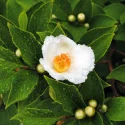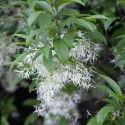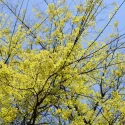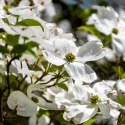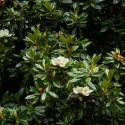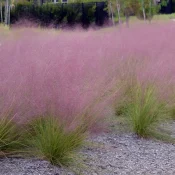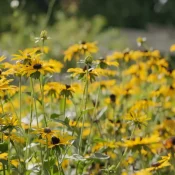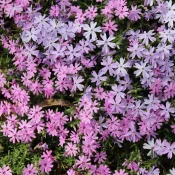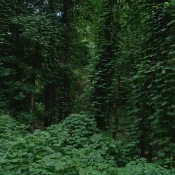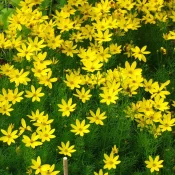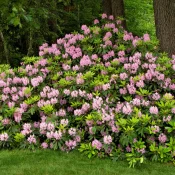What are the best native trees for front yards?
When picking a tree for a front yard, there are a few things to consider. First, you don’t want it to get too big and block your home. Second, you want it to be resilient enough to thrive in your weather and seasons—native plants are built to do this. And lastly (and perhaps most importantly!) you want it to be a stunning, welcoming showpiece. Here are several native trees that check ‘yes’ for each of these asks, delivering curb appeal and fuss-free gardening.

Why plant a native tree in your front yard?
If you’ve ever driven or walked past a yard that looked a little glum or empty, chances are—it’s missing trees. Landscaping over the past several generations has tipped a little too far into grass-focused, shrub-only choices. (We partly blame Marie Antoinette.) A yard without trees not only looks a little sad and empty, but it also doesn’t invite beautiful creatures like butterflies, birds, and hummingbirds.
Enter native gardening and native trees!
Native trees are trees that have grown in an area for thousands—sometimes millions—of years. Every single drought, blizzard, or heat event they have lived through. Often, they are the preferred food and homes for our favorite iconic wildlife. Their DNA understands the idiosyncratic nuances of our soil, seasons, and wildlife.
Most importantly for busy homeowners, after a native tree is established in the first year—most need just rain to thrive.
And three other reasons to plant a native tree in your front yard:
- Native trees return decades of beauty. Spend a morning or afternoon planting a native tree, and watch it return years and years of beauty.
- Native trees are the most resilient choices when it comes to climate change. Some non-native trees are not strong enough to handle the fluctuations in weather we’ve seen due to climate change. On the other hand, native trees are often resilient enough to weather our changing weather.
- Many native trees are deer-proof. If you struggle having deer nibble your landscaping, pick a native tree that’s deer-unfriendly.

Now that we’ve discussed the benefits of planting a native tree in your front yard, let’s meet some native tree options to consider.
The best native trees for front yards
Each of these native trees stays relatively small (under 40 feet), making them perfect statement trees. Listed here alphabetically, here are 10 amazing native trees for front yards. Follow the links to read more about each tree.
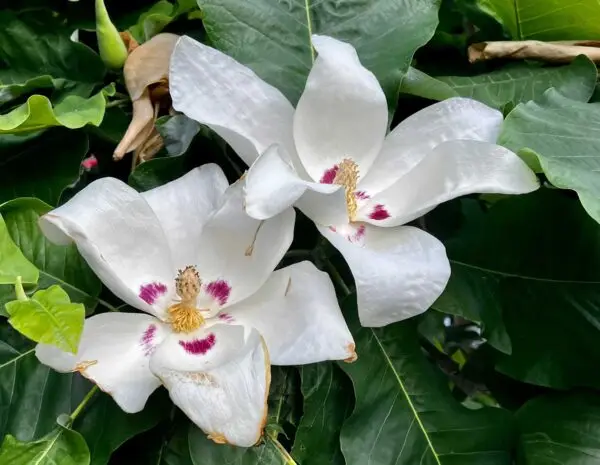
1.
Ashe Magnolia
The world is filled with dozens of magnolias—eight of the most beautiful magnolias are native to North America. One of the most stunning is the Ashe Magnolia.
Ashe Magnolias are native to the Florida Panhandle, but have been successfully grown for generations as far north as Pennsylvania! You’ll know it’s an Ashe by the memorable pink markings on the inside of the flowers. Ashe Magnolias stay small—up to 40 feet—making them front yard-friendly. Call around to local and native nurseries in your area—they may have to special order this for you. (But it’s soooo worth it!)
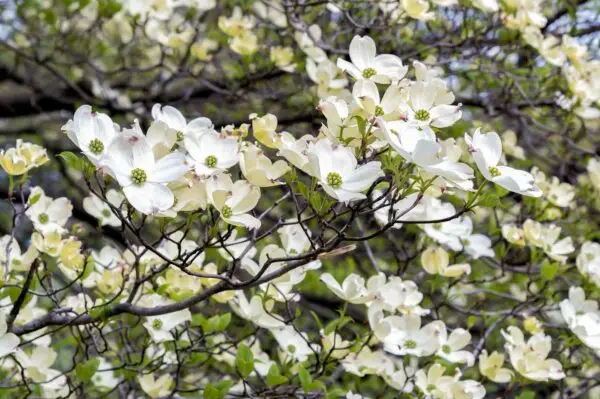
2.
Eastern / Western Flowering Dogwood
There are ten species of dogwood native to North America (read our native Dogwood guide to meet them all.) Two of the most iconic species are the Eastern Flowering Dogwood and the Western Flowering Dogwood. Both trees flower with stunning four-petal flowers in the spring.
As you may guess from the name, the Western Flowering Dogwood is native to the western side of North America, and the Eastern Flowering Dogwood is native to the eastern seaboard. In other words—no matter where you live, there is probably a native flowering dogwood for you.

3.
Franklin Tree
Franklin Trees start blossoming in June/July and keep blooming until frosts in October. It’s rare to find a tree that keeps the show going for so long.
This is a stunning native tree with a direct link to early American history. Franklin Trees were spotted in Georgia in the 1700s by a father and son botanist duo exploring on behalf of King George. They found a grove of these trees in their wanderings, went back to get seeds, and… the tree has never been seen in the wild since! Every single Franklin Tree can trace its existence back to this 1700s expedition.
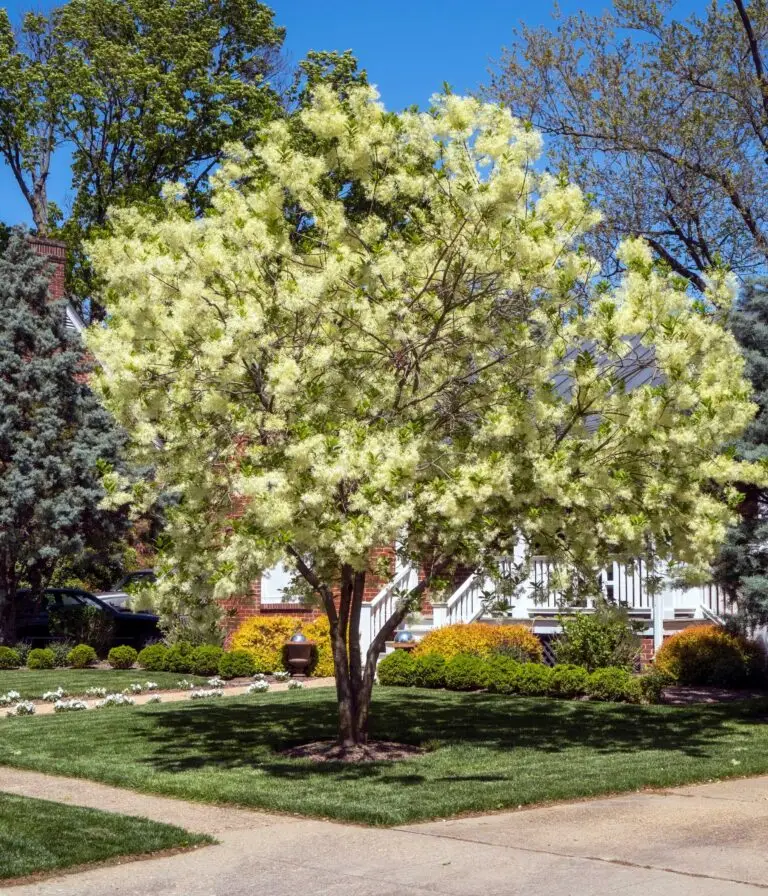
4.
Fringe Tree
Fringe Trees cover themselves in sweet-smelling white confetti-like flowers at the end of the spring into summer. The blossoms smell amazing. You’ll sometimes hear a Fringe Tree before you smell or see it—hundreds of pollinators and butterflies can be buzzing around when it’s in bloom. They don’t get too tall either; growing up to 30 feet.
It’s hard to imagine how this native tree has been hiding in plain sight for generations—why are there cherry blossom festivals and not Fringe Tree festivals? Let’s plant Fringe Trees and see if we can change that in our lifetimes.
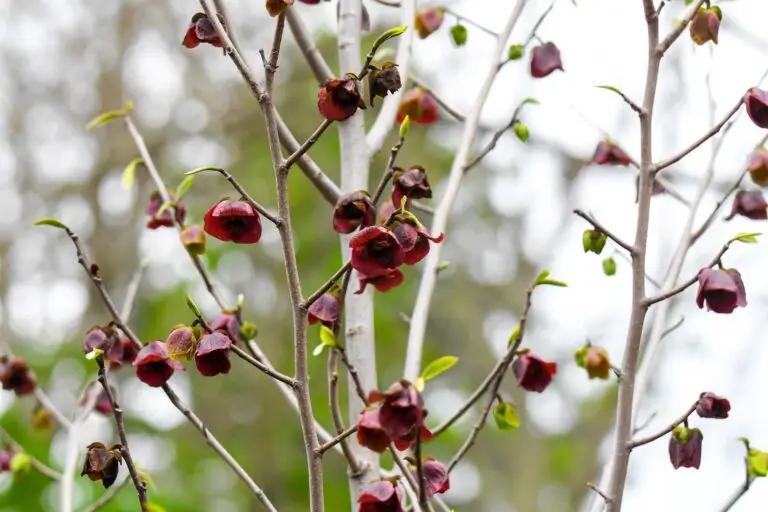
5.
Pawpaw
Want to plant a beautiful tree AND eat the largest fruit native to North America? Plant some Pawpaws. Most Pawpaws top out around 30 feet and change dramatically with the seasons. In the spring, they flower with gothic, dark red flowers. When leafed out, they look tropical—almost like an avocado tree. These leaves provide places for Zebra Swallowtail butterflies to lay their eggs and food for their caterpillars, making them a host plant.
In the fall, the leaves turn shades of yellow while their mango-like fruits grow. You’ll need to plant a few to cross-pollinate and get fruit, but wow—is it worth it!
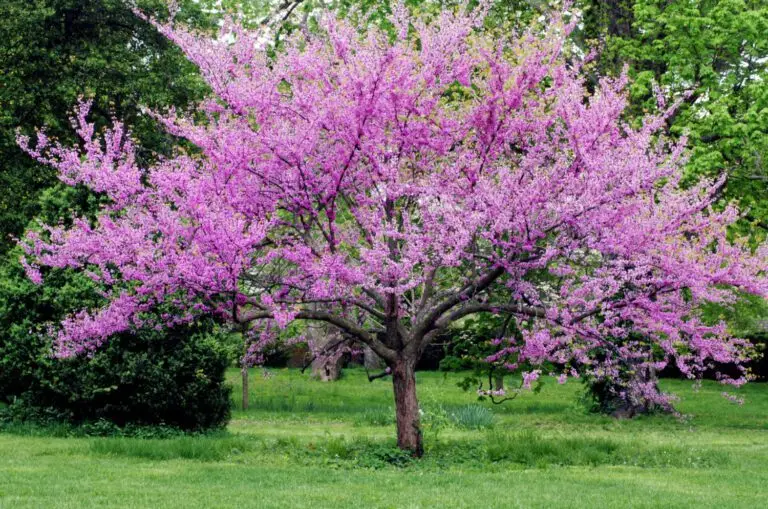
6.
Redbud
If you’ve seen this tree before, you know it’s an absolute stunner. Redbuds are some of the earliest plants to bloom—beating even daffodils in some areas. They cover themselves in tiny purple-pink flowers, coating each branch (and even part of their stem!) with flowers.
After the flowers come heart-shaped leaves that turn buttery yellow in the fall. Topping out at around 30 feet tall, they are a perfect front yard tree.
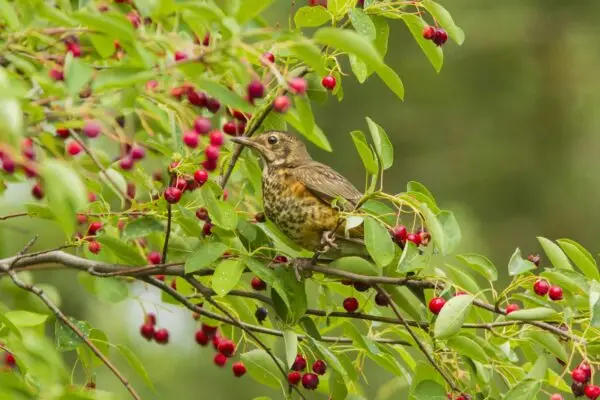
7.
Serviceberry
Serviceberries cover their branches in white blossoms in the early spring (alongside redbuds, they are some of the earliest plants to flower.)
In June, Serviceberries are covered in small, edible fruit. They taste like a cross between a blueberry and a raspberry. You may need to fight the birds for the fruit because they are beloved by people and birds. Plant a serviceberry for beauty, jam, and bird-watching possibilities.

8.
American Smoke Tree
This is a beautiful tree, not only in the spring and summer while in bloom with its puffy flowers but especially when its leaves put on a show in the fall. This is one of the most beautiful trees in autumn; its leaves turn shades of red, orange, and purple.
Smoke Trees like full sun and are so easy to plant one master gardener said, “Basically, this tree can be planted and then forgotten. Once established, it thrives on neglect”—! Smoke Trees are thrilling trees with minimal work.

9.
Texas Mountain Laurel
If you live in the South, this might be the front yard tree for you. Texas Mountain Laurel blooms with fistfuls of purple, cascading flowers in the spring and early summer. The smell is often described as grape Kool-aid. Although some call it a shrub, Texas Mountain Laurel is easily trained to be a small tree.
When in bloom, they are pollinator magnets, attracting butterflies, bees, and hummingbirds. They are also magnets for Instagram because they are so singularly stunning. Texas Mountain Laurel is drought-tolerant, evergreen, and long-lived.
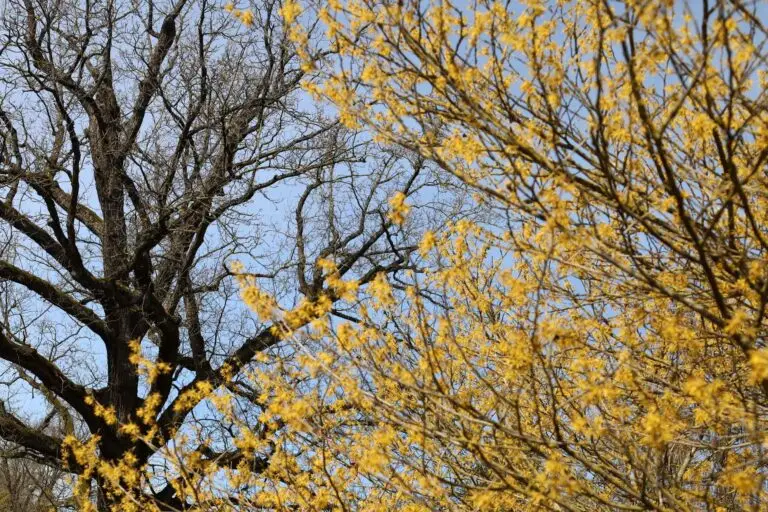
10.
Witchhazel
If you ever get the fall or winter sads, witchhazel is a great tree for your front yard. Two species of native witchhazel flower either in the late fall or very early spring (Jan/Feb). Their flowers look like bright yellow or reddish pom-poms and smell bright, spicy, and also a little sweet.
Witchhazel’s branches twist in sculptural arrangements, making them gorgeous even without flowers. In the summer, enjoy their verdant green leaves. In the fall, the leaves turn gradients of yellow-orange before falling. They are beautiful native trees.
Want a taller statement tree?
Want something that will last for 100+ years and will be stunning for generations? Great, tall native choices are Southern Magnolias, Sweetbay Magnolias, or Tulip Poplars. All these trees have incredible flowers and put gardens in the sky in the spring/summer.
What shrubs are good for front yards?
So glad you asked. Native trees look amazing paired with native shrubs that return the same resiliency and beauty. Some native shrubs to consider include:
If you’re looking for further inspiration on what to pair with a native tree, try the Three-Color Landscaping method. Sticking to three colors quickly brings harmony to yards without hiring a professional landscaper (and makes garden decision-making much easier.) Or check out our guides for planting butterfly, hummingbird, or bird gardens.
Let’s sum it up, and say it simply:
It’s time to plant a native tree
It can be a little overwhelming (and scary) to commit to planting something in our front yards—especially something as big and seemingly final as a tree. You might think planting a tree in the front yard is best left to professional landscapers—but you can easily do this yourself, with the right plant choice.
This is why planting native is the best way to landscape our front yards. Native plants literally plant themselves—they have the DNA to thrive in our yards with minimal care. They return decades of beauty, alongside food for pollinators and butterflies. Planting native trees ensures we can have gorgeous yards that are fuss-free, especially compared to lawn care or planting non-native plants. Pick your favorite native trees and plant them today for the front yard of your dreams.
P.S. Planting trees is truly one of the best, most rejuvenating things a person can do. You will feel different afterward—a little more connected, a little more thankful to be a part of this beautiful world. Happy planting ❤️
Sources
- Nelson, Gil. Best Native Plants for Southern Gardens: A Handbook for Gardeners, Homeowners, and Professionals, (2010).
- Harstad, Carolyn. Go Native! Gardening with Native Plants and Wildflowers in the Lower Midwest. (1999), 209-210.












